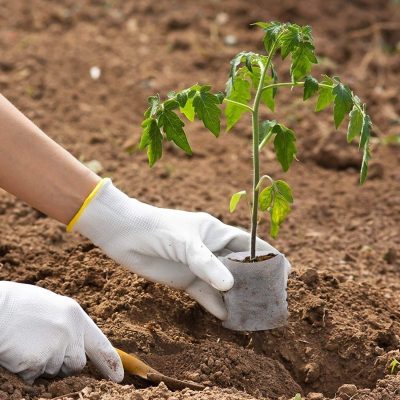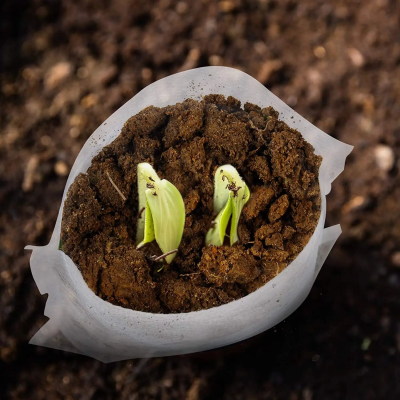Non-woven grow bags are designed to create a favorable environment for plant growth by incorporating several scientific principles. Here’s a breakdown of how they work:
- Breathability and Airflow: Non-woven grow bags are made from porous materials that allow for excellent breathability and airflow. The porous nature of the fabric allows air to circulate through the sides of the bag and into the root zone. This airflow is crucial for providing oxygen to the roots, promoting root respiration, and preventing the buildup of excess carbon dioxide.
- Root Pruning and Air Pruning: Non-woven grow bags promote root pruning and air pruning, which are essential for healthy root development. As the plant’s roots reach the edges of the grow bag, they encounter the air outside the bag. This exposure to air stimulates the roots to undergo air pruning, where the tips of the roots die back. This pruning prevents root circling or binding and encourages the growth of lateral roots, resulting in a dense and fibrous root system.
- Water Drainage: The porous nature of non-woven grow bags allows for excellent water drainage. When watered, excess moisture can escape through the sides of the bag, preventing waterlogging and maintaining optimal moisture levels in the root zone. Proper drainage is crucial for preventing root rot and ensuring that the roots have access to oxygen.
- Temperature Regulation: Non-woven grow bags help regulate soil temperature. The breathable fabric allows excess heat to escape, preventing the roots from becoming overheated in hot weather. It also provides insulation, helping to retain some warmth during cooler periods. This temperature regulation promotes optimal root function and overall plant health.
- Moisture Retention and Evaporation: Non-woven grow bags strike a balance between proper drainage and moisture retention. While they facilitate good drainage to prevent waterlogging, they also retain moisture to a certain extent. The fabric can hold onto some moisture, providing a reservoir for the roots to access water as needed. However, non-woven grow bags may have slightly higher water evaporation rates compared to other container types, requiring more frequent watering in certain climates.
- Flexibility and Portability: Non-woven grow bags are lightweight and flexible, making them highly portable. The flexibility allows the bags to conform to the root structure of the plant, ensuring maximum contact between the roots and the potting mix. This adaptability also makes it easier to move the grow bags around, optimize sunlight exposure, or create space for other plants as needed.
Overall, the science behind non-woven grow bags revolves around creating a breathable, well-drained, and root-friendly environment for plants. They facilitate proper airflow, promote root pruning and air pruning, regulate temperature, and strike a balance between moisture retention and drainage. By harnessing these scientific principles, non-woven grow bags provide an ideal growing medium for plants and contribute to their overall health and growth.








